Share
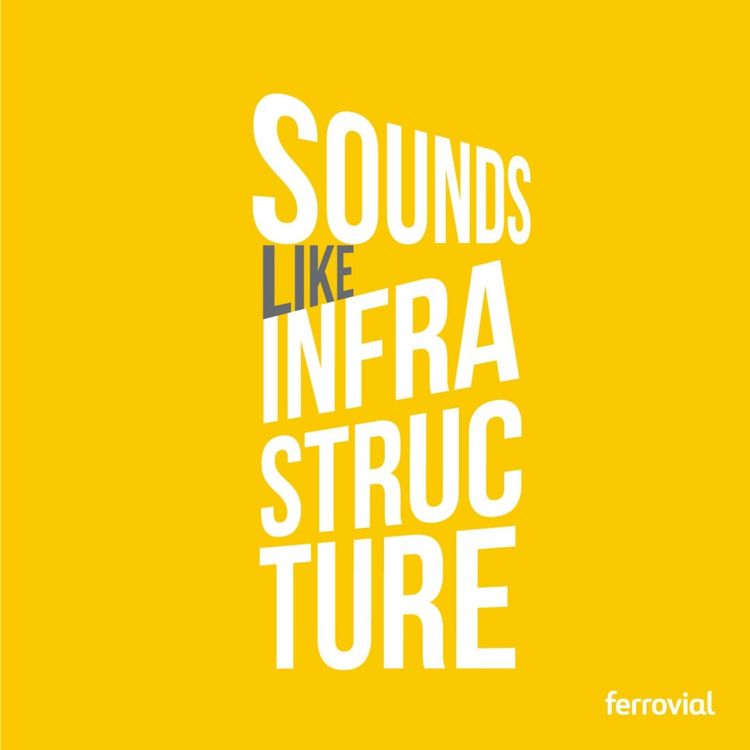
Sounds Like Infrastructure by Ferrovial
01 - Down by the River | Ferrovial
In 1858, London was engulfed by a smell so bad that the pungent odor hovering over the city was given its own name. Even the blinds at the houses of parliament had to be soaked in lime of chloride to protect politicians from the afflictions it was believed to cause. By this point, Londoners had been dumping thousands of tons of raw sewage into the Thames on a daily basis. The combination of raw sewage and an unusually hot summer led to not just the smell, but a devastating outbreak of cholera in the world’s most populous city.
What Londoners didn’t know was that it wasn’t the smell that was causing cholera, but the simple fact that they were drinking the water from the very river they were dumping sewage into. To hide the smell, Victorian engineer Joseph Bazalgette was hired to create a network of sewers beneath the city. His sewers were a huge success but today they’re at full capacity and the Thames is once again at risk of pollution.
To help provide a cleaner Thames, Ferrovial Construction is working as part of a joint venture to build the central part of what is known as the Thames Tideway super sewer.
This episode of Sounds Like Infrastructure was produced by Craig Lawless and Nicholas Hewson. Original music and editing by Craig Lawless. If you liked this episode, share it with your friends or go to our channel to listen to other cool stories!
To learn more about Ferrovial and check out some of our other projects, visit www.ferrovial.com.
More episodes
View all episodes
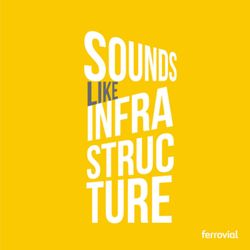
23. 23 - Empowering America: Innovative Solutions to Power Outages
14:43||Season 3, Ep. 23Have you ever wondered what life would be like without electricity? Most of us don’t give it much thought—until the lights go out.In February 2021, Winter Storm Uri swept across Texas, plunging millions into darkness. Roads froze, power lines snapped, and hospitals were overwhelmed. Texans faced days of uncertainty in freezing temperatures, underscoring the fragility of our energy systems.This event highlighted the need for a more resilient energy future. The U.S. has relied heavily on fossil fuels like coal, oil, and gas for energy. However, over the past decades, the energy landscape has shifted toward renewable sources such as wind and solar power. Despite this effort, renewables come with challenges, such as intermittency, which is why backup systems like natural gas remain crucial.Innovating in an urban setting is becoming more and more critical. An example is the case of JFK Airport’s New Terminal One in New York, where an advanced microgrid that combines solar, battery, and hydrogen technologies is being implemented. This system can operate independently of the grid during outages, offering resilience in a high-risk coastal area.Ferrovial’s commitment to innovation and sustainability reflects its vision to create a better world. By modernizing infrastructure and investing in clean energy, the company is helping communities adapt to the challenges of climate change while ensuring a stable power supply for generations to come. Sounds Like Infrastructure is a collaboration between Ferrovial and Yes We Cast. Our team includes Francisco Izuzquiza, Alberto Espinosa, Ignacio Fernández Vázquez, Luciano Branca, Gabriel Ureta, José García Guaita, Arantxa Gulias, Marina Pastor, Bethany Ashcroft and Fatima Gracia De Vargas.In addition to the podcast, we have a great blog with so many more stories about infrastructure projects. https://blog.ferrovial.com/en/.If you enjoyed this episode, check out the other episodes on the official Ferrovial Podcast page. We also have a Spanish Podcast channel.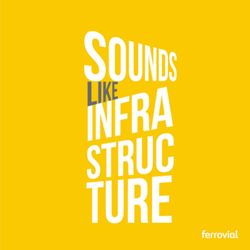
22. 22 - TEXpress Lanes: A Decade of Faster Commutes
16:50||Season 3, Ep. 22Let's travel back in time, about 100 years, to the state of Texas. Today, five of the most populated cities in the United States are here, but in the early 20th century, it was a small rural community connected by dirt paths. The arrival of industrialization completely transformed the area, especially two communities, the Dallas–Fort Worth metroplex.Transportation advancements contributed to its rapid expansion, with one critical network: highways. However, there came a point when the development of the road network and population growth became uncoordinated. This presented a challenge: How can we create a future transportation network that supports sustainable population and economic growth?The mission was clear: designing a project to enhance urban mobility while tackling congestion and traffic jams. But the challenge was anything but simple, as we had to accommodate over 13 million vehicles on the roads. Our team started looking for a real-time solution that wouldn't take years to implement, and that's when the concept of Managed Lanes was born.This groundbreaking system introduces additional lanes with advanced technology that analyzes traffic patterns and creates a pricing strategy tailored to demand. By offering drivers the choice to use these lanes, we reduce traffic and revolutionize how people move around.In this episode, join Jose Espinosa, CEO of Texpress Lanes, and María Chávez, sustainability manager at Cintra, the highways subsidiary of Ferrovial, as they dive deep into the workings of this innovative system. Discover how the LBJ Express, NTE, and NTE 35W set the standard for sustainable mobility in Texas.Sounds of Infrastructure is a collaboration between Ferrovial and Yes We Cast. Our team includes Francisco Izuzquiza, Alberto Espinosa, Ignacio Fernández Vázquez, Luciano Branca, Gabriel Ureta, José García Guaita, Arantxa Gulias, Marina Pastor, Bethany Ashcroft and Fatima Gracia De Vargas.In addition to the podcast, we have a great blog with so many more stories about infrastructure projects. https://blog.ferrovial.com/en/.If you enjoyed this episode, check out the other episodes on the official Ferrovial Podcast page. We also have a Spanish Podcast channel.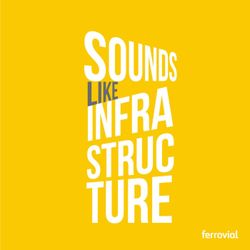
21. 21 - Conquering the Sky: The Evoultion of Air Travel
14:42||Season 3, Ep. 21Have you ever dreamt of flying? This dream is quite common. Humans have always been fascinated by the skies, and our quest to conquer them dates back to the Spain of Al-Ándalus. Amazing, isn’t it? In the 9th century, the Andalusian scientist Abbás Ibn Firnás decided he wanted to fly. After a few crashes, he created a prototype that was able to glide for a few seconds. Interestingly, this device also became the world's first parachute when he attempted to land. Fast forward to the past century, the Wright Brothers made history by creating the first airplane. With this achievement, the aviation industry took off, leading to the creation of the first airports. Today, airports have become global hubs, connecting the world through the skies. This transformation has been driven by continuous innovation and adaptation to meet new user needs and security requirements. Our colleagues from Ferrovial's Airports subsidiary, Víctor Vicente, Asset Manager; Laura López Sotomayor, Financial Director; and Ismael Ordoñez, Head of Asset Management, share insights on how airports have evolved into the infrastructures we know today. Furthermore, what can we expect from the future of aviation? Tune in to this episode and join us in a guessing game about how the horizon might look the next time we take a plane. Sounds Like Infrastructure is a collaboration between Ferrovial and Yes We Cast. Our team includes Francisco Izuzquiza, Alberto Espinosa, Ignacio Fernández Vázquez, Luciano Branca, Gabriel Ureta, José García Guaita, Arantxa Gulias, Marina Pastor, Bethany Ashcroft and Fatima Gracia De Vargas.In addition to the podcast, we have a great blog with so many more stories about infrastructure projects. https://blog.ferrovial.com/en/.If you enjoyed this episode, check out the other episodes on the official Ferrovial Podcast page. We also have a Spanish Podcast channel.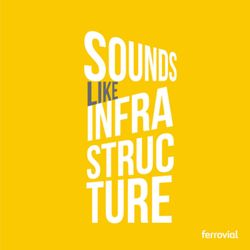
20. 20 - The London Tube: The World’s Oldest Underground
14:24||Season 3, Ep. 20London is one of the main metropolitan areas of the world. If you think about the English capital, you can probably name ten iconic things off the top of your head. Shakespeare, Abbey Road, Buckingham Palace, Sherlock Holmes. A city that's buzzing with music and theater, in constant movement.The London metro system, or the "tube" as Londoners call it, is a symbol of the city's vitality. It's not just a network of tunnels and trains but a testament to the city's evolution. From its small beginning to the complex system, it is today, a lot of history and effort has gone into making it what it is.The Tube, the world's first underground railway, has a rich history that dates back to the construction of the Metropolitan Railway, the first metro line, inaugurated on January 10th, 1863. Today, the system boasts 275 stations organized on 11 lines, a far cry from its humble beginnings.Today, the London underground has grown and evolved alongside the city. In this episode, we delve into London's history and the Tube's evolution, culminating in the Northern Line Extension. Carlota Guiu Morros and David Drake Sloan, who spearheaded this project, share the challenges and necessities of constructing one of London's largest redevelopments in 300 years.Sounds Like Infrastructure is a collaboration between Ferrovial and Yes We Cast. Our team includes Francisco Izuzquiza, Alberto Espinosa, Ignacio Fernández Vázquez, Luciano Branca, Gabriel Ureta, José García Guaita, Arantxa Gulias, Marina Pastor, Bethany Ashcroft and Fatima Gracia De Vargas.In addition to the podcast, we have a great blog with so many more stories about infrastructure projects. https://blog.ferrovial.com/en/.If you enjoyed this episode, check out the other episodes on the official Ferrovial Podcast page. We also have a Spanish Podcast channel.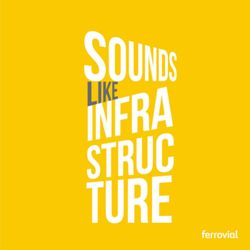
19. 19 - Infrastructures and Biodiversity: The Canadian Butterfly Highway
08:11||Season 3, Ep. 19How can we evolve as a society without sidelining the environment?The past few decades have brought about new needs in a rapidly evolving landscape, bringing up new questions. The challenge is to find ways to adapt to the local habitats we’re building in, from the tallest trees to the smallest animals. But, how can we protect some of the most fragile species in our projects? This dilemma is precisely what our team faced.The 407 ETR highway in Ontario, Canada, is a key infrastructure for transportation in the area. It’s, in fact, one of the busiest roads in North America. It is also surrounded by vast wildlife where a critical species lives, the monarch butterfly, an endangered species necessary to keep life going due to their main role as pollinators.So, when we started to build this highway, it became imperative to do so in such a way that the ecosystem became the main infrastructure. The project was designed to promote local biodiversity and support the monarch butterfly, creating a corridor for nature preservation.Working hand in hand with the Canadian Wildlife Federation we established a native flower garden where the monarch butterfly can thrive. Together, we are pioneering a new approach to construction, where humanity and nature coexist harmoniously on our path to a sustainable future.We talk about this in this podcast episode. We hope you like it!Sounds of Infrastructure is a collaboration between Ferrovial and Yes We Cast. Our team includes Francisco Izuzquiza, Alberto Espinosa, Ignacio Fernández Vázquez, Luciano Branca, Gabriel Ureta, José García Guaita, Arantxa Gulias, Marina Pastor, Bethany Ashcroft and Fatima Gracia De Vargas.In addition to the podcast, we have a great blog with so many more stories about infrastructure projects. https://blog.ferrovial.com/en/.If you enjoyed this episode, check out the other episodes on the official Ferrovial Podcast page. We also have a Spanish Podcast channel.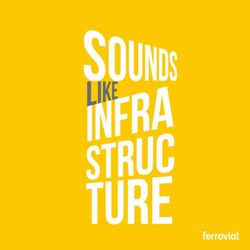
18. 18 - Hurricane Season: How to Be Informed and Prepared | Ferrovial
16:56||Season 2, Ep. 18During the hurricane season in the Atlantic, a period that runs from June 1 to November 30 each year, the tropical cyclones that head towards the US and Caribbean coasts test the management and strength of all constructions and infrastructures. Meteorologist Albert Martinez explains how to predict the path of a hurricane and the deadlines citizens have to prepare for potential hazards. Edgar Acosta, Design Build Estimating Manager at Webber, and Daniel Morrow, Construction Manager at Webber, tell us how Hurricane Harvey impacted the Houston area in 2017 and how neighbors organized to help rebuild the damaged homes. We also hear from Paul Staton, Business Director at Webber, and Ryan McCalla, Vice President of Civil Works Operations at Webber, as they explain how engineering helps manage these emergencies, taking us through the Port Miami underwater tunnel and two large bridges near Houston, specially designed to facilitate evacuations and ensure the safety of the population. Sounds of Infrastructure is a collaboration between Ferrovial and Yes We Cast. Our team includes Francisco Izuzquiza, Alberto Espinosa, Sergio F. Núñez, Luciano Branca, Kevin Garcia King, José García Guaita, Arantxa Gulias, Claudia Castañón Piqueras, Amanda Loro, Bethany Ashcroft and Fatima Gracia De Vargas.In addition to the podcast, we have a great blog with so many more stories about infrastructure projects. https://blog.ferrovial.com/en/.If you enjoyed this episode, check out the other episodes on the official Ferrovial Podcast page. We also have a Spanish Podcast channel.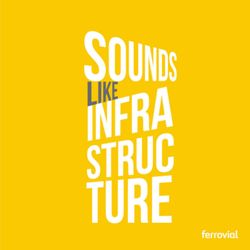
17 - Skyscrapers: Engineering Reaches New Heights | Ferrovial
22:34|We have always been struck by the incredible height of skyscrapers. Do you know how tall the tallest building in the world is? The current record is 2,717 feet, over half a mile. Nonetheless, we are sure that somewhere in the world, an even taller one is already being planned. Have you ever wondered how tall they are downwards? How many feet would they have had to build underground, to support such a height above? And how is the tallest building in the world built? In this episode of Sounds Like Infrastructure, we dive, or rather climb, to the tallest building in the world. We want to discover what it takes to build a skyscraper and how they have evolved throughout history. We are joined by Eduardo Ortega, head of the architecture department within the technical management of Ferrovial Construction, Benjamín Juárez, Director of safety, health and wellbeing at Ferrovial, and Jorge Iglesis, architect and professor at the University of Chile. Sounds of Infrastructure is a collaboration between Ferrovial and Yes We Cast. Our team includes Francisco Izuzquiza, Alberto Espinosa, Sergio F. Núñez, Luciano Branca, Kevin Garcia King, José García Guaita, Arantxa Gulias, Claudia Castañón Piqueras, Amanda Loro, Bethany Ashcroft and Fatima Gracia De Vargas.In addition to the podcast, we have a great blog with so many more stories about infrastructure projects. https://blog.ferrovial.com/en/.If you enjoyed this episode, check out the other episodes on the official Ferrovial Podcast page. We also have a Spanish Podcast channel.
16. 16 - State-Of-The-Art Construction | Ferrovial
21:20||Season 2, Ep. 16In 1765 the Scotsman James Watt invented the steam engine. In 4500 BC, humans from way back then invented the wheel. More than six thousand years of difference between one invention and the other, but both completely transformed society at the time and all that was to come. On a smaller scale, construction, engineering and architecture evolve thanks to the accumulation of experience and the arrival of new technologies that drive change. In this episode of Sounds of Infrastructure, we delve into how innovation has pushed the wheel of evolution to keep turning: sustainability, digital development, new forms of construction worldwide... Various examples of how human beings keep reinventing themselves and guarantee progress. Sounds of Infrastructure is a collaboration between Ferrovial and Yes We Cast. Our team includes Francisco Izuzquiza, Alberto Espinosa, Sergio F. Núñez, Luciano Branca, Kevin Garcia King, José García Guaita, Arantxa Gulias, Claudia Castañón Piqueras, Amanda Loro, Bethany Ashcroft and Fatima Gracia De Vargas.In addition to the podcast, we have a great blog with so many more stories about infrastructure projects. https://blog.ferrovial.com/en/.If you enjoyed this episode, check out the other episodes on the official Ferrovial Podcast page. We also have a Spanish Podcast channel.You can also find out more about us at www.ferrovial.com
15. 15 - AIVIA and the Future of Smart Highways | Ferrovial
26:28||Season 1, Ep. 15Imagine the highways of the future with faster drive times, fewer accidents and reliable, instant safety alerts that are navigated by a mixture of connected and autonomous vehicles (CAVs). As vehicles are getting smarter, so as the roads in which they circulate in thanks to emergence of new technologies like 5G, C-V2X and real-time sensing which are being retrofitted into the existing infrastructure.In this episode, Cintra's Senior Innovation Manager, Jen Duthie, explains the concept of smart highways, using Cintra's AIVIA Smart Roads initiative (Smart Roads Technology Solution - Cintra’s AIVIA (aiviasmartroads.com)) as an example, together with the technologies around it and how mobility solutions like these will make our roads safer and more reliable for all users.Sounds Like Infrastructure is a collaboration between Ferrovial and Veleta Media. Our team includes Craig Lawless, Kevin García King, José García Guaita, Arantxa Gulias, Bethany Ashcroft, Fátima Gracia de Vargas and Paloma González de Canales Díaz. Editing by Craig Lawless.In addition to the podcast, we have a great blog with so many more stories about infrastructure projects. https://blog.ferrovial.com/en/.If you enjoyed this episode, check out the other episodes on the official Ferrovial Podcast page. We also have a Spanish Podcast channel. You can also find out more about us at www.ferrovial.com and at www.aiviasmartroads.com.